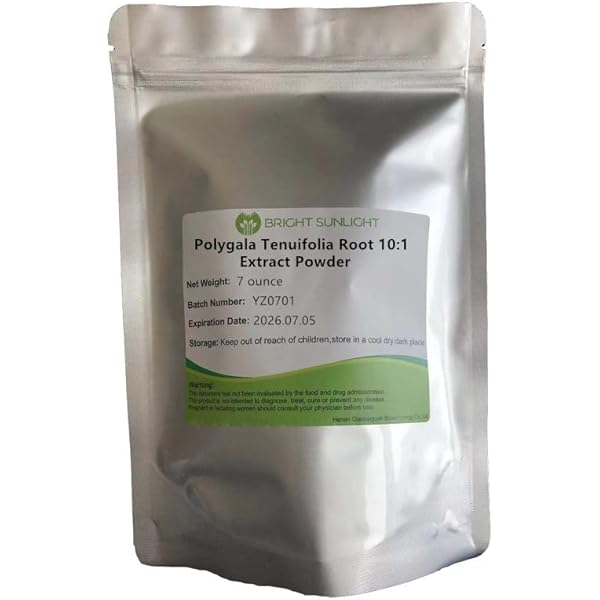At a glance
Polygala tenuifolia (Yuan Zhi) is a traditional Chinese herb long used to "open the heart-mind" and support memory, calmness, and resilient motivation. Modern pharmacology finds it acts on glutamate systems (NMDA/AMPA), supports antioxidant and anti-inflammatory pathways, and may modulate monoamines — offering plausible mechanisms for the cognitive and mood effects reported anecdotally.
Cultural & historical context — "Zhi" and the heart-mind
In Traditional Chinese Medicine the idea of Zhi (志) refers to the inner will — a calming, centred resolve that radiates from a balanced heart and well-nurtured essence (Jing). Polygala tenuifolia — known as Yuan Zhi — has been used for centuries to calm the spirit (Shen), support memory, and "open the orifices" (a classical phrase meaning improved clarity and communication between mind and body).
"Yuan Zhi was traditionally used to bring heart and kidney into better harmony — supporting purposeful action, clearer thinking, and emotional steadiness."
Historically it was prescribed alongside other tonics and mind-calming herbs as part of a lifestyle that emphasized rest, meditation, and dietary moderation — all elements that still shape modern outcomes when the herb is used today.
How it may work — a modern pharmacology summary
Contemporary studies identify several converging mechanisms that explain why Polygala often produces a sense of calm clarity and improved learning in preclinical models:
- Glutamatergic modulation (NMDA/AMPA): certain saponins and aglycones from Polygala influence NMDA and AMPA receptor signaling, supporting synaptic plasticity and LTP (long-term potentiation), the cellular basis of learning and memory.
- Neuroprotection & antioxidant signaling: compounds such as senegenin activate antioxidant pathways (Nrf2/HO-1), reduce ROS, and inhibit inflammatory NF-κB signaling — protecting neurons from stress and toxin-induced damage.
- Monoamine preservation: some extracts show MAO-inhibitory activity in vitro, which could prolong dopamine, norepinephrine and serotonin signalling and help explain improvements in mood and motivational tone.
- Synaptic repair & neurogenesis support: preclinical work shows benefits for hippocampal function, reduced cytokines in vulnerable brain regions, and protection against memory impairments in animal models of neurodegeneration.
What users (and you) often report — a practical paraphrase
Many users describe Polygala's effects as subtle and cumulative rather than sharply stimulatory. Common, consistently reported themes include:
- Less ruminative thought: a reduction in repetitive negative thinking and improved ability to step back and observe intrusive thoughts.
- Steady motivational tone: a background sense of drive and reward — not a "rush" but a smoother, longer-lasting engagement with productive tasks.
- Improved mental clarity & memory: easier learning and recall, especially during focused work or study periods.
- Richer dreams & sleep quality: some users note more vivid dreams and improved REM consolidation after regular use.
Your personal observations — a calming of "messy thoughts", improved mood stability, and waves of progressive motivation — fit neatly with the herb's proposed actions on glutamate, antioxidant systems, and monoamine preservation.
Practical use: forms, dosing & stacking
There is no universally accepted human dosage. Most modern users and translational studies use standardized extracts or isolated compounds at conservative ranges. Below are pragmatic starting points informed by translational research and community practice:
- Standardized extract (root): 150–600 mg/day (start low: 50–150 mg for first week, then titrate).
- Isolated constituents (research contexts): compounds like senegenin are used experimentally in mg ranges under controlled settings — not for casual self-medication.
- Stacking: pairs well with lifestyle supports (sleep, resistance exercise) and complementary nutraceuticals such as L-theanine (calm focus), low-dose tyrosine (precursor support) or omega-3s (neuroprotection).
- Cycling: because evidence on long-term human safety is limited, many users cycle 6–12 weeks on, followed by a 2–4 week break.
Safety considerations & interactions
Polygala is generally well tolerated in typical community doses, but there are important caveats:
- GI sensitivity: raw saponins can irritate the gut at high doses — begin low and increase slowly.
- MAO/medication interactions: theoretical risk if combined with MAO inhibitors or drugs that significantly affect monoamine signalling — consult a healthcare provider.
- Pregnancy & children: insufficient data — avoid unless under clinician guidance.
- Product quality: choose reputable suppliers, standardized extracts, and products with third-party testing when possible.
If new symptoms emerge (palpitations, marked anxiety, severe GI upset), stop use and seek medical advice.
Images & identification (illustrative)
Below are illustrative botanical images. They are provided for educational purposes — verify plant identification from trusted botanical sources if you forage or source raw material.



Where to buy (examples)
Below are vendor search pages for commonly stocked Polygala extracts. Links point to general vendor search results so you can review product pages, certificates of analysis (COAs) and third-party testing.
When selecting a product prefer: standardized extracts, clear part-of-plant labeling (root vs. aerial), third-party COAs, and transparent extraction details.
Selected references & further reading
Representative sources that underpin the discussion (primarily preclinical & translational studies):
- Senegenin review — Frontiers in Pharmacology
- Polygala tenuifolia and anti-Alzheimer's research
- NMDA receptor targeting in emotional disorders (context for glutamate action)
- Preclinical evidence of rapid-onset antidepressant-like effects
If you want, I can format these into an APA/MLA bibliography for publication or include DOI tags and direct PDF links.
Bottom line
Polygala tenuifolia is a traditionally respected herb that modern science is beginning to explain: it supports synaptic plasticity, protects neurons from inflammatory and oxidative stress, and can influence monoamine and glutamate systems in ways that plausibly improve mood, focus and resilience. Your personal observations — quieter rumination, a steady motivational tone and improved clarity — map well to the herb’s pharmacology. Use cautious dosing, pick quality extracts, and combine the herb with strong lifestyle foundations (sleep, movement, nutrition) for best results.
Would you like a publication-ready HTML file with the same structure but tailored images (sourced and licensed), an APA bibliography, and social sharing metadata for WordPress? I can generate that next.